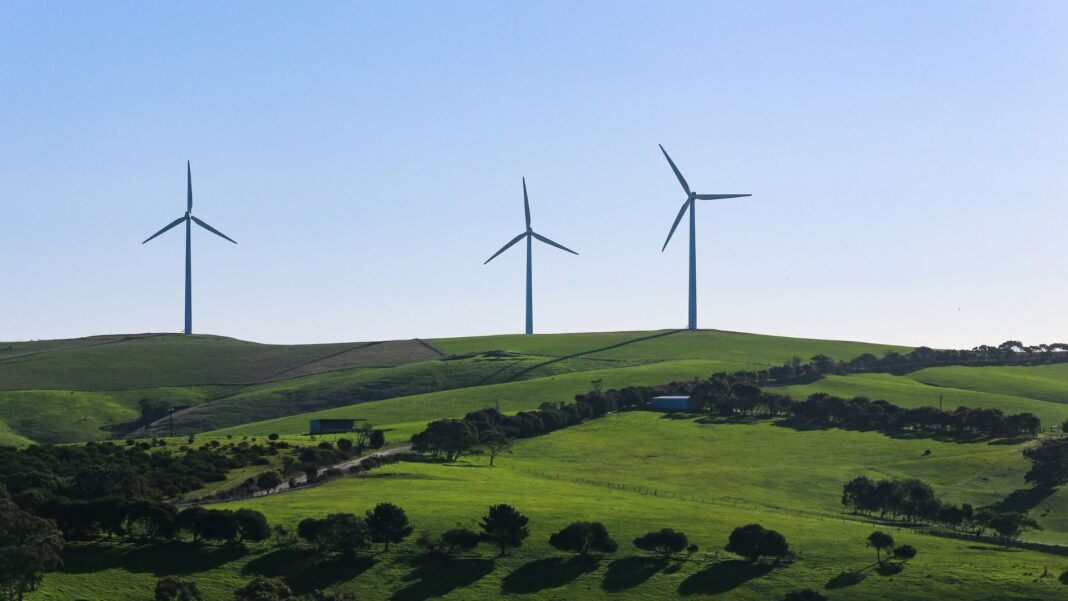As the world seeks sustainable solutions to combat climate change, wind turbines stand out as a key player in the renewable energy landscape. Harnessing the kinetic energy of wind, these towering structures convert it into electricity, providing a clean, sustainable power source. This comprehensive guide delves into the workings, benefits, and future of wind turbines.
What Are Wind Turbines?
Wind turbines are devices that convert the kinetic energy of wind into mechanical power. Which can then be converted into electricity. They typically consist of a rotor with blades, a nacelle that houses the generator, and a tower that supports the structure.
Benefits of Wind Turbines
- Environmental Impact: Wind turbines produce no greenhouse gas emissions during operation, significantly reducing carbon footprints. They help mitigate climate change and preserve air quality.
- Renewable Resource: Wind is an inexhaustible resource. Unlike fossil fuels, which deplete over time, wind will continue to blow, providing a reliable energy source.
- Economic Advantages: Wind energy can reduce electricity costs and provide energy price stability. The wind industry also creates jobs in manufacturing, installation, and maintenance.
- Energy Independence: By harnessing local wind resources, countries can reduce their reliance on imported fossil fuels, enhancing energy security and independence.
How Wind Turbine Work
- Wind Capture: Wind blows against the turbine blades, causing them to spin. The design of the blades is crucial. As it determines how effectively the wind energy is captured and converted into rotational energy.
- Mechanical Power Generation: The rotor connected to the blades spins a shaft inside the nacelle. This shaft is connected to a generator, where the mechanical energy is converted into electrical energy.
- Electricity Production: The generated electricity is transmitted to a transformer. Which converts it to a higher voltage for distribution through power lines.
Types of Wind Turbines
- Horizontal-Axis Wind Turbine (HAWT): The most common type, featuring blades that rotate around a horizontal axis. These are typically seen in wind farms and can be very large. With rotor diameters spanning over 100 meters.
- Vertical-Axis Wind Turbine (VAWT): These have blades that rotate around a vertical axis. They are less common but have advantages in turbulent wind conditions and are often used in urban environments.
Offshore vs. Onshore Wind Turbines
Onshore Wind Turbine:

Located on land, these turbines are easier to install and maintain. They are commonly found in wind farms and are often situated in areas with strong, consistent winds.
Offshore Wind Turbine:

Installed in bodies of water, usually on continental shelves. They benefit from stronger and more consistent winds than onshore turbines and have less visual and noise impact on communities. However, they are more challenging and expensive to install and maintain.
The Future of Wind Energy
The wind energy sector is rapidly evolving, driven by technological advancements, policy support, and the urgent need to address climate change. Here are some key trends shaping the future of wind turbine’s:
- Increased Efficiency: Innovations in blade design, materials, and aerodynamics are making wind turbines more efficient. Larger turbines with longer blades are capable of capturing more wind energy.
- Floating Wind Turbines: These turbines are anchored to the seabed and can be placed in deeper waters where wind speeds are higher. Floating turbines open up new areas for wind energy development.
- Hybrid Systems: Combining wind turbine with other renewable energy sources, such as solar panels, can provide a more consistent and reliable energy supply.
- Smart Technology: Advances in digital technology and artificial intelligence are optimizing wind turbine performance. Smart sensors and predictive maintenance systems reduce downtime and increase efficiency.
Conclusion
Wind turbines are a vital part of the transition to renewable energy, offering a sustainable, clean, and economically viable power source. As technology continues to advance, wind energy will play an increasingly important role in the global energy mix.
Embrace the power of the wind and contribute to a sustainable future. Explore our resources for more information on wind energy solutions and how you can benefit from this incredible technology.
